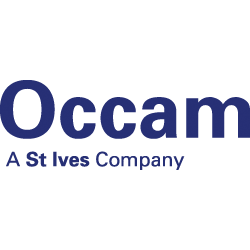Part5: Data-Driven: Mastering the complexity of Marketing Technology
16 Sep 2016

You understand your data landscape and its potential, you recognise the gaps that you need to fill and how to do that and you are committed to make data a high quality asset. The next step to optimising your data driven marketing is technology, but what do you need and how do you deal with the wealth of options that now exist?
Core technical capabilities
Three core capabilities should guide your Data Driven Marketing technology strategy:
1. To bring together and optimise data
2. To transform data into insights; and
3. To make insights actionable by enabling decisions to be made, automated and orchestrated across channels to deliver an optimised customer experience

Underpinning these capabilities is the concept of integration. Data must be made accessible for it to reveal insights. Insights must be made accessible to facilitate decisions, and decisions must be made accessible to result in meaningful customer touchpoints. Each of these is essential for delivering actionable insight, the foundation stone for Data Driven Marketing.
Making the complex a little bit simpler
Selecting technology to provide these capabilities can feel like a daunting task. With latest counts suggesting close to 6,000 vendors of marketing technology, the choice can seem bewildering. Yet a little common sense (and a methodical approach) can make this complexity feel simpler.
Step 1: Assign ownership for technology strategy – Depending on the size of your organisation this could be a single individual or a cross functional working group headed by a dedicated Marketing Technologist. Either way, involving your internal IT teams is key, as is having someone with the ability to understand the worlds of marketing and technology. If you struggle to identify a suitable internal candidate to head this up, then consider bringing in specialist external support to kick-start your strategy.
Step 2: Agree your guiding principles – Your guiding principles form the bedrock of your technology purchasing strategy. Some key principles to address include:
Do you choose a Software-as-a-Service (SaaS)/Cloud system, or do you host it yourself?
‘Best of breed’ or is just enough good enough (i.e. will you take 70% of what you need for a quicker implementation or reduced cost, or will you only settle for the full 100%)?
Architectural constraints – Legacy systems? Windows based infrastructure? What does your new technology need to integrate with?
The power of open, loose coupling -a guiding principle that Occam always advise our clients to aspire to:
i. Open System technology means the vast majority of functionality and data can be used and accessed via other technologies. These Application Programming Interfaces (API) might, for example, include outbound campaign management technology that could instruct an email platform to send emails, a mobile messaging platform to send SMS and a print production system to create and send direct mail packs, and then tell those systems to pass back any interaction/response data. Open system technology is essential for automation and integration of different capabilities.
ii. Loosely Coupled means that integration between applications should be achievable in a way that allows for one application to be swapped out for another with minimal effort. This is essential for flexibly matching technology choices with evolving and changing consumer needs and behaviours.
Loose coupling can be extremely hard to achieve and is often dependent on middleware that may be in the hands of IT.
Step 3: Recognise what you already have – You’re probably already using a wealth of technology, either directly within the marketing department or within other areas of the business. In our experience, a technology audit often highlights where businesses are licensing multiple technologies that provide the same core features.
If you have undertaken a Data Landscape Definition then you already have a great starting point to map out your technology, however, be sure to look outside the boundaries of marketing across the entire business landscape as you might just find a nugget of gold.
Step 4: Categorise the good, the bad and the ugly – Every company needs a consistent way of evaluating technology against business needs (including those guiding principles). A framework such as the TIME model from Gartner can be a useful way to tackle this activity. It compares the technical capability and business value of software, then categorises it under one of 4 treatments:
o TOLERATE: Continue to maintain. Technically sound, but business workarounds may be needed to operate
o INVEST: Continue to maintain & enhance. Meets technical and business needs
o MIGRATE: Consider replacement/upgrade. Meets business needs but requires technical improvement (if feasible)
o ELIMINATE: Consider decommissioning. Fails to meet technical and business needs
Step 5: Focus on your investments – Integration is the key principle underpinning data marketing technology and its 3 core capabilities. Yet integration can also be a problem, cited by 56% of marketersas the biggest obstacle they encounter when pursuing data driven marketing activities.
There are ways to address this. Investing in integration Platform-as-a-Service (iPaaS)-type propositions is one option (especially if pursuing the “loosely couple” principle). But if time, resource or budget constraints mean that’s unlikely, then once you have identified your cornerstone investment technologies you could look to identify all the other technologies that have pre-integrated with them.
More and more vendors are building out ecosystems of connected third party applications. For example, many BI/MI platform vendors provide pre-built integration with marketing applications such as CRM systems, digital analytic platforms and social media monitoring technologies to make data from those systems accessible for use in analysis and reporting. Start by looking at your investment technologies and identifying the integrated options that exist across the technologies you are looking to acquire.
More steps to follow, but you should be on the right path
By following the 5 steps above you have begun to master the complexity of marketing technology in your data driven marketing strategy. Subsequent stages include documenting your requirements, evaluating and selecting suppliers, implementing the technology and mastering the organisational change needed to unlock their potential. All daunting tasks in their own right, but with these foundations in place you will be well set-up to succeed and have a much clearer view of your ultimate destination.
Gary Arnold, Solution Strategy Director at Occam DM Ltd (part of the St Ives Group)





Please login to comment.
Comments